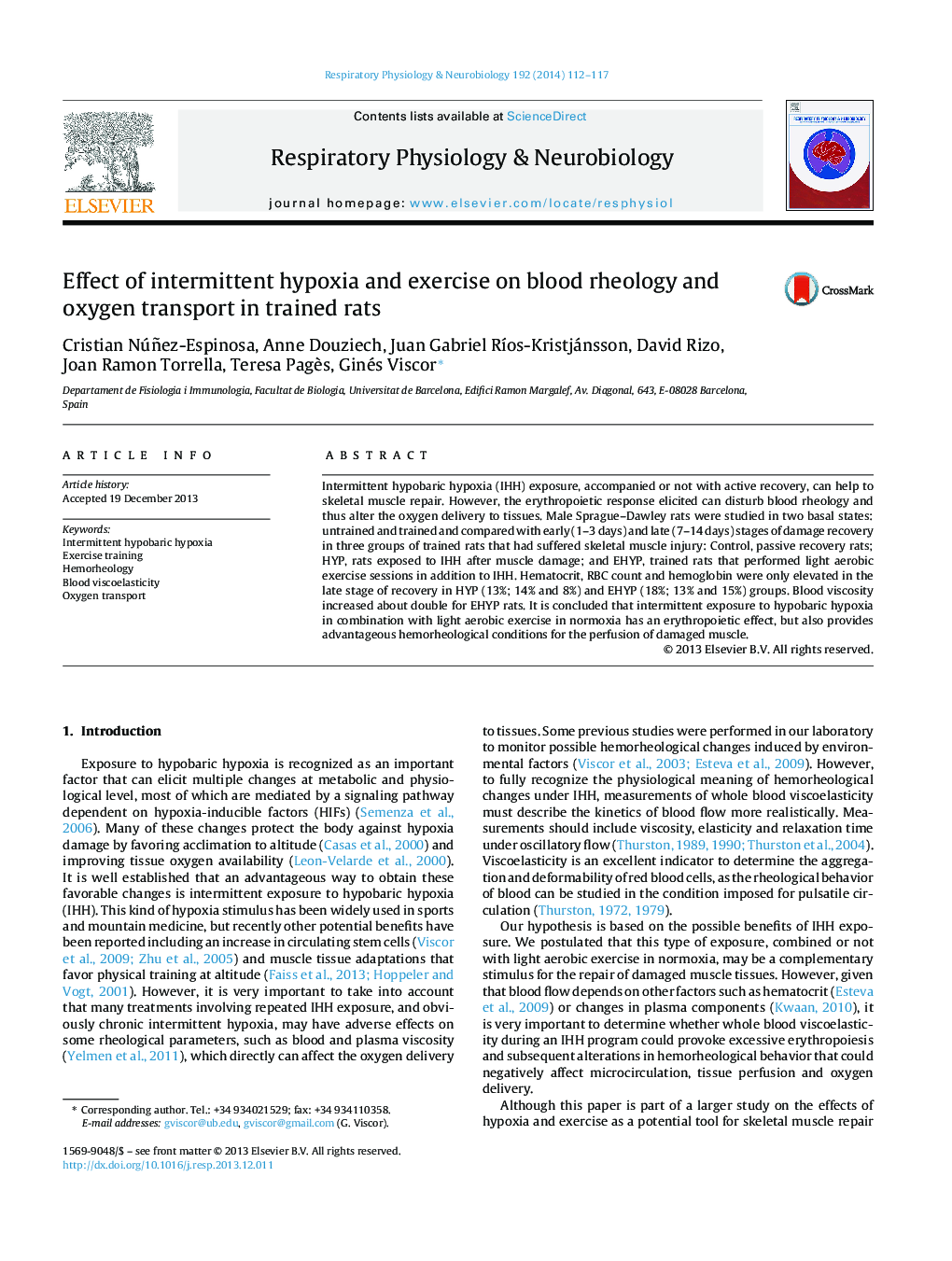| Article ID | Journal | Published Year | Pages | File Type |
|---|---|---|---|---|
| 2847048 | Respiratory Physiology & Neurobiology | 2014 | 6 Pages |
•Intermittent exposure to hypobaric hypoxia in combination with light aerobic exercise in normoxia has an improved erythropoietic effect.•After muscle damage, blood viscoelasticity is higher in rats that perform aerobic training in addition to hypobaric hypoxia exposure.•Higher blood viscoelasticity prevents to maintain blood flow and oxygen delivery to tissues.
Intermittent hypobaric hypoxia (IHH) exposure, accompanied or not with active recovery, can help to skeletal muscle repair. However, the erythropoietic response elicited can disturb blood rheology and thus alter the oxygen delivery to tissues. Male Sprague–Dawley rats were studied in two basal states: untrained and trained and compared with early (1–3 days) and late (7–14 days) stages of damage recovery in three groups of trained rats that had suffered skeletal muscle injury: Control, passive recovery rats; HYP, rats exposed to IHH after muscle damage; and EHYP, trained rats that performed light aerobic exercise sessions in addition to IHH. Hematocrit, RBC count and hemoglobin were only elevated in the late stage of recovery in HYP (13%; 14% and 8%) and EHYP (18%; 13% and 15%) groups. Blood viscosity increased about double for EHYP rats. It is concluded that intermittent exposure to hypobaric hypoxia in combination with light aerobic exercise in normoxia has an erythropoietic effect, but also provides advantageous hemorheological conditions for the perfusion of damaged muscle.
